It is a common sentiment to want a little more time in your day. Especially in today’s era of hyper-connectivity where distractions are countless and to-do lists are the length of your arm.
While no one can increase the number of hours you have in a day, there are ways you can make the most out of the hours that you do have.
Let’s talk time blocking.
Time blocking could be the way you organize your daily schedule and the answer to your productivity problems.
Here’s everything you need to know about the time management technique used by the likes of Bill Gates and Elon Musk.
What is Time Blocking?

Time blocking is a time management technique.
This type of time tracking requires that you divide your day into defined slots or chunks of time. Each block of time is dedicated to completing a specific task or group of tasks, and only those.
When you manage your time in this way you are ensuring your work gets complete. The mapped out measured spaces ensure task completion.
This also means that you will not have to decide what to focus on. You will not be making constant choices as to how to spend your time but simply following a time blocked schedule.
This concept of time management can be seen to be derived as a response to Parkinson’s Law.
Parkinson’s Law suggests that the amount of work expands to the time available for its completion.
In response, the time blocking theory suggests that the stricter you are with the time you allot to each task, the outputs will be more results-driven and focused.
How Does Time Blocking Work?
This method of time management is designed for focus. You are effectively guarding against distraction.
A study conducted in 2010 by Harvard psychologists, found that people spend 46.9% of their waking hours thinking about something other than what they are doing.
With such time management, you don’t just know what you have to get done but also when you have to get it done.
“What gets scheduled gets done. What doesn’t get scheduled doesn’t get done”
For example, if you are someone who spends a lot of time at work replying to emails and answering calls, you may want to block out a time dedicated to doing this. This way you are not constantly going back and forth between your emails and the task you are currently working on.
Pro tip: Communicate the hours that you dedicate to such activities in your voicemail message or as an email signature. This allows those who are getting in contact with you to know when they’re likely to receive a response.
Variations of Time Blocking
There are certain variations of this time management method that are worth considering.
Some of the most common types include: day theming, task batching, and time boxing. Let’s go over each briefly.
1. Day Theming
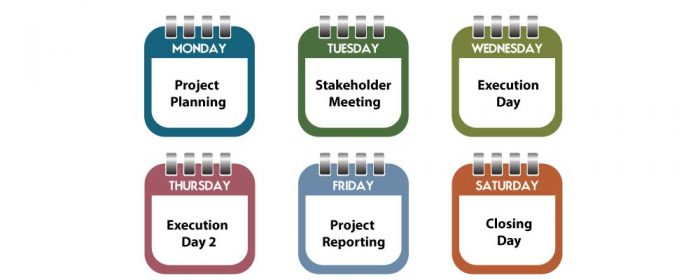
Day theming allows for big picture items to get completed.
This type of time management is a great technique for individuals who have a lot of areas of responsibility who all require attention.
Day theming works by dedicating a day of the week to each responsibility a person has.
Dedicating a single day to a particular type of task allows you to create a reliable pattern of work. Thus, you limit the cognitive load of context switching.
Context Switching: Context switching is the act of flitting in and out between multiple different tasks. A study found that most people average only 3 minutes on a task before they switch to something else.
Moreover, this allows you to lessen your decision making fatigue and lets you focus on the work of the day.
2. Task Batching
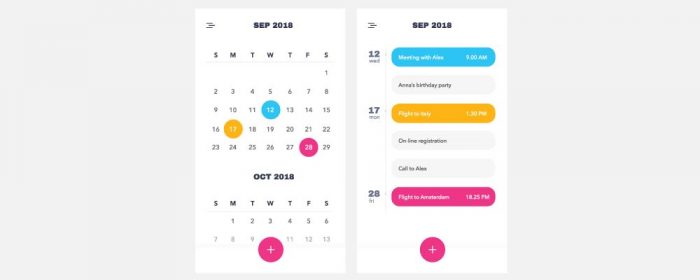
Task batching is when you batch similar tasks together so you can do them all at once.
This eliminates the act of working on them sporadically throughout the day.
By focusing on like items together you can create a more concentrated workflow, give more focus to your work, and minimize distractions thus allowing you to become more productive.
Task batching is effective because it breaks the cycle of context switching and creates structure around chunks of time.
This allows you to commit to a particular task without constant interruption and distraction.
3. Time Boxing
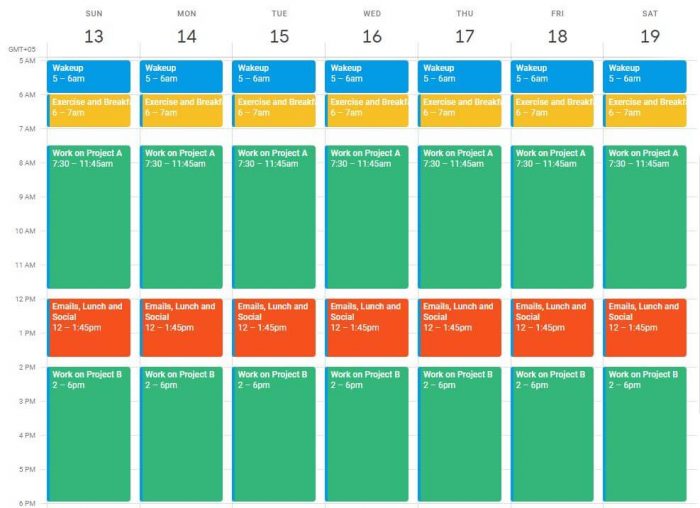
Time Boxing Example
Time Boxing follows the idea of allocating a defined amount of time in advance to an activity and then complete the activity within the time frame you defined.
The “time box” that you define ensures that you work efficiently because you only have a limited time to complete your task.
A common question asked is what is the difference between time blocking and time boxing?
While they both involve allocating fixed time periods to specific activities, timeboxing involves limiting the time you spend on the activity, and time blocking includes strictly reserving time for the activity.
This might be of your interest:
Benefits of Time Blocking
When done well blocking your time can help you manage your work and input more effectively.
By dedicating a specific time to complete any particular task you lock your focus and thus minimize context switching that can be both distractive and disruptive.
1. Encourages you to Reflect on your Priorities

The way blocking your time works effectively highlights what your priorities are. You cannot schedule a blocked calendar without first deciding what you deem to be a priority and how long you think it will take.
Moreover, once you follow a schedule with the blocked time you can better reflect how you spend your time.
This will allow you to plan better and also encourage you to plan your schedule and fill your calendar with meaningful tasks.
2. Promotes Focused Deep Work

We have mentioned this above as well, but by scheduling a block of your time to work on any particular task, you avoid distractions and context switching.
Moreover, you also bring all your mental resources to focus on one thing rather than spreading your concentration thin across multiple different tasks.
When you “single-task” you build mental muscles that are needed to do deep work. This makes it easier for you to then stay focused.
Single-tasking: Single-tasking is the opposite of multitasking, and is the act of doing one thing at a time. A study conducted found that on average people switch between apps and websites more than 300 times a day.
3. Combats Perfectionism and Procrastination
Two of the time management’s biggest enemies are procrastination and perfectionism.
By using the time block method you can thwart both these adversaries.
When following the blocking method, you are encouraged to schedule your calendar with your most challenging tasks first. Thus, this way you reserve your energy and will power.
Moreover, you can use time blocks to break larger projects into more manageable tasks.
4. Discourages Multitasking

While the workforce of today is so used to multitasking, the reality is that it is damaging to productivity.
By blocking off time not only are you promoting deep focused work but you are limiting focus for those tasks which although are urgent are not essential.
When you constantly switch between tasks your attention is going to be divided and thus you will not be able to give your best for anything that you are working on.
5. It helps you Follow Through on Your Goals
Researchers found that having a concrete plan helps people see their intentions through.
Therefore, by scheduling your tasks and goals there is a higher chance of you following through with your intentions.
By blocking time in your calendar you are forced to make concrete plans. Thus you are not just working towards your goals in a vague way but are doing so every day with the work that you block time for.
Related:
18 Best Project Planning Tools of 2022
6. You Become Aware of how you Spend your Time

It is common for people to underestimate or overestimate how long it takes to complete any particular task. This usually results in overestimating your future self.
By using the method of blocking your time, you are forced to highlight your priorities and also be decisive about how you will spend time and how long you need to complete any particular task.
Whenever you set a new goal or commit to doing a task you will have to find physical space in your calendar to do it.
7. It Becomes Easier to say no
Following on from being aware of how you spend your time, blocking time in your calendar helps you say “no.”
When you try to find physical space in your calendar and you cannot do so, it is very easy to inform the person giving you the task that doing it is not possible for you.
How to Time Block?
Now that you know the variations and the benefits of blocking your time, let’s get into how you can time block your schedule.
In order to effectively block your time, you need to live proactively. Living proactively ensures that you are planning your days around those tasks that will help you meet your long-term goals.
Below we will highlight steps to start with blocking your time and create your schedule accordingly.
However, remember that this is simply a template that you can adapt and modify according to what works for you.
At its most basic, blocking time involves; planning, defining time blocks, following your schedule, testing, and revising.
Here are certain steps that you can follow to help create your time blocked schedule.
Step 1: Plan with Priorities in Mind
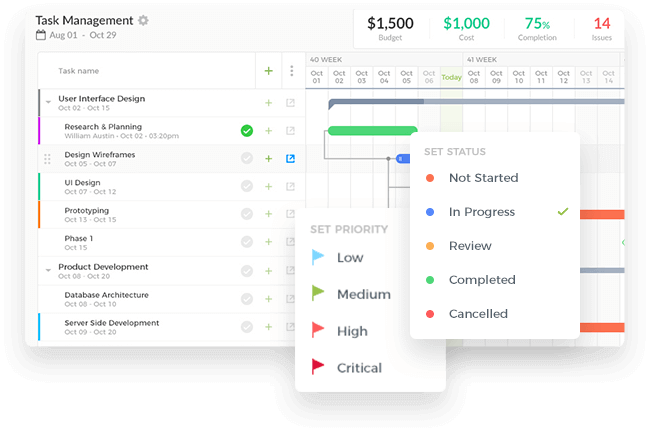
The first thing that you need to do is determine what it is you need to get done. Once you have organized your to-do items, it is important that you prioritize all the items on your list of tasks.
A good way to go about this is by brainstorming all tasks you have to work on in the week to come. When you brainstorm your tasks it is likely that you will list a number of tasks with lower priority.
Ensure you highlight all the priority tasks that cannot be avoided.
Once you have highlighted priority tasks, and before you define time blocks, try and also identify your biological prime time is.
Biological Prime Time: is the time of the day when you have the most energy and so have the most potential to be productive.
By doing this you will be able to identify what is the best time of the day to keep your most difficult tasks.
It is also beneficial to understand why you want to block your time.
Are you trying this time management method to become more focused on your work? Do you want to schedule more time for your family? Are you hoping to spend less time on menial tasks?
Knowing your priorities and why you are trying this time management method will shape what tasks make it onto your schedule as well as how you will block out your day.
Step 2: Define and Create Time Blocks
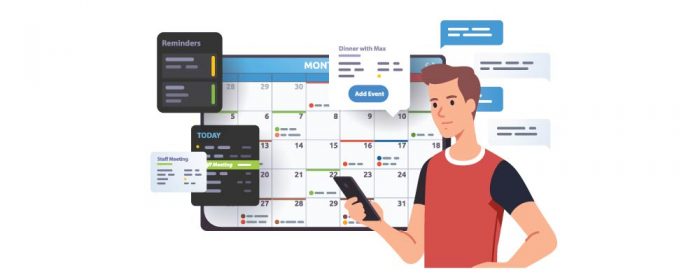
Once you know what your priorities are it is important to define your time blocks. This is where you identifying your most productive times will also come in handy.
You need to decide when you need to block time. Is this schedule just going to be for your workday, or do you also want to schedule a time when you go home?
A good way to start creating your schedule is by first deciding guardrails for your time. Section of when you want to start blocking your time, as well as till when.
Keep in mind that you should not schedule any block of time for more than 90 minutes. This is because this works with your natural rhythm. Studies by Professor K. Anders Ericsson have shown that best performers practiced in focused sessions of no more than 90 min.
Useful resource:
Pomodoro Technique + The 9 Best Pomodoro Apps & Timers for Work
Step 3: Follow your Schedule

After deciding on the what, when, and for how long it is finally time to follow the schedule you have created.
A good way to do this is by starting with one block at a time. Follow a certain block you have scheduled for a week and slowly ease into the schedule you have created.
Although this seems simple, especially since all the planning and groundwork has been completed following your schedule may not be as easy as you may think.
Once you will start following your schedule you will figure out whether the prescribed blocks you created will work in real life.
As we said before, it is common for people to overestimate or underestimate how long a certain task will take.
Step 4: Revise
Once you start working on your time blocks it’s a good practice to track the time you work on them.
You can use tools such as nTask that have timesheet and time tracking features.
By doing this you can determine what your time blocks should be. With the time tracking data you collect you will know for sure how long tasks take and thus you will know which time blocks will work.
Common Mistakes to Avoid
Now that you know how to go about creating a schedule with time blocks there are certain common mistakes that people make that you should avoid.
These mistakes are often the reason why people assume that blocking time is not the right time management method for them.
However, if you simply consider these common errors, blocking time is a great way to stay organized and be more productive.
1. Inadequate Planning
As we have highlighted above, to create an effective schedule with time blocked efficiently that will work in real life you need to take some time to plan.
“Sometimes people ask why I bother with such a detailed level of planning. My answer is simple: it generates a massive amount of productivity. A 40-hour time-blocked work week, I estimate, produces the same amount of output as a 60+ hour work week pursued without structure.”
While taking the time to organize your week’s to-do list and schedule in priority work may seem to take too much time, it will definitely get you to work more efficiently and give more focus to the work at hand.
2. Being too Rigid
The most common mistake made in relation to blocked time is taking it as a concrete plan.
This is an incorrect way to look at this time management method. Creating time blocks in your schedule is meant to be seen as a guide.
This guide is to help you focus on priorities but is not concrete.
It is part of life for things to come up and plans to change. Remembering this is important.
See your time blocks as flexible ways to stay organized and challenge yourself. Don’t punish yourself by making these blocks as binding contracts that you will fall short of following.
Therefore, it is good to use nTask or other such tools to monitor your time blocks rather than creating strict plans that cannot be amended.
While with a calendar you can easily block time out tools such as nTask give you a proper overview of how you spent the blocked time.
3. Not Allowing Buffer Time
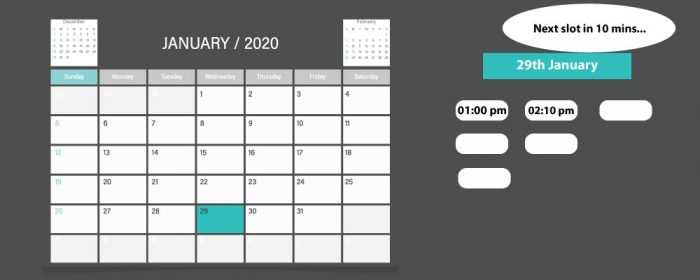
For time blocks that run smoothly, it is a good idea to account for buffer time which is often forgotten.
You cannot seamlessly move from one activity to the next without accounting for time in the middle to make the transition.
This buffer time could be for going to the bathroom or giving yourself a breather, or even just having a small chat with someone.
Accounting for time to transition is important otherwise if this time sneaks its way into your next time block this will delay your tasks for that block. This will give you stress and eventually keep carrying on to knock your schedule out of proportion.
This time also allows for any admin tasks that often pop up that need to be completed right away.
By getting these out of the way before your next block of time, you can enter the next block with a clear mind. You will also avoid feeling ragged and exhausted because of items that you have to catch up on.
Check out some top time blocking apps:
The 12 Best Time Blocking Apps
4. Forgetting to Account for Leisure Time and Breaks
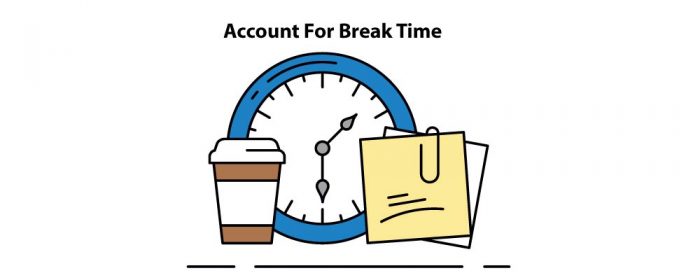
The purpose of blocking time is not to spend every second grinding.
It is important to remember to take breaks and decompress. Making sure that your time blocks are not too overwhelming and allow for breaks in the middle is important.
This does not simply mean scheduling a lunch break.
Small breaks throughout the day help to stay fresh and focus and add to productivity.
You could use your buffer time for such breaks or create small leisure blocks as well to account for the time when you talk to colleagues or grab a snack.
Conclusion
That’s everything you need to know about block time scheduling.
If you keep in mind these common mistakes, and the purpose behind time blocking your day your time management will be a breeze.
More Readings:

